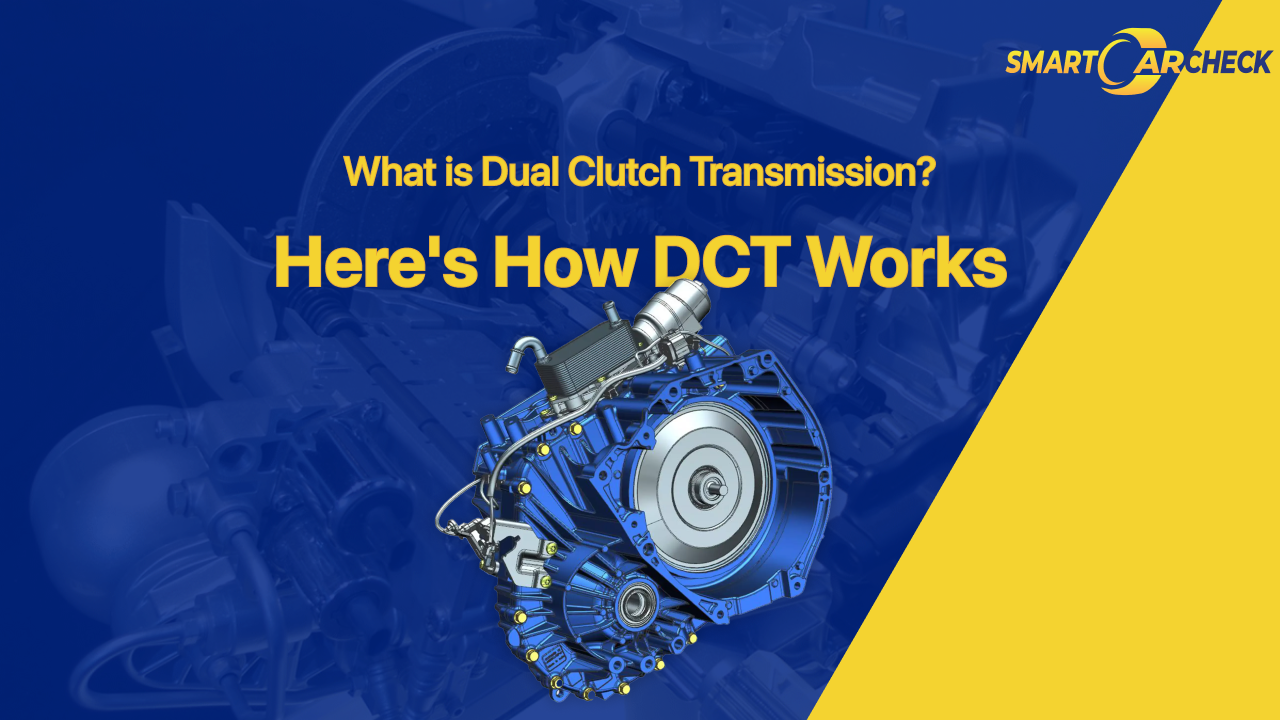Are you one of those car owners or buyers who have asked the question “What is dual clutch transmission?” If you are, this article will be the answer to all your questions. The dual clutch transmission or twin clutch transmission is something you may know about if you drive a Volkswagen GTI as they were the first to implement it.
Here, we will discuss everything you need to know about dual-clutch transmission, the pros and cons, and the top cars with this vehicle transmission system.
What is Dual Clutch Transmission?
Dual Clutch Transmission, often referred to simply as DCT, is a type of automated manual transmission system commonly found in modern vehicles.
Unlike traditional automatic transmissions, which use a torque converter to transfer power from the engine to the wheels, DCT utilizes a pair of clutches (dual-clutch gearbox) to engage and disengage gears. Let’s take a closer look at this.
Brief History of Dual-Clutch Transmissions
The concept of a dual-clutch transmission can be traced back to the 1930s when engineer Adolphe Kégresse filed a patent for a transmission system with two clutches. The issue with manual gearboxes at that time was that they were difficult to operate and they needed a lot of strength and precise timing to work.
Kégresse developed interest and tried to develop an easy to operate and smooth transmission. However, due to problems with his business, he was never able to develop a working model.
During the 1940s and 1950s, various prototypes and experimental designs for dual-clutch transmissions were developed by different automotive manufacturers, laying the groundwork for future advancements.
In the 1980s, however, things started to look promising with the introduction of the Porsche 956 race car in 1983, equipped with a groundbreaking DCT – the PDK (Porsche Doppelkupplungsgetriebe).
The technology gradually transitioned from racetracks to performance cars. Volkswagen Group popularized DCTs in production vehicles, branding them as “Direct-Shift Gearboxes” (DSG). By the early 2000s, DCTs were available in models like the Volkswagen Golf GTI and the Audi TT.
How Does a Dual-Clutch Transmission Work?
Have you ever driven a car with manual transmission? How does it feel? When you find a car with a regular manual transmission, you need to manually select gears using a gear lever and a clutch pedal.
This hands-on approach provides a direct connection between the driver and the vehicle. Whenever the car comes to a stop while driving, they have to step on the clutch pedal with their left foot. This action disengages the engine from the transmission, and essentially, the wheels.
Simultaneously, the driver downshifts to a lower gear (usually second or first) using the gear lever. When pulling away from a stop, the driver simply releases the clutch pedal, engages the right gear, and proceeds to zoom off.
DCT Mechanism in cars
With dual clutch transmission cars, the process is a lot easier as it combines the best of both manual and automatic transmissions. Unlike a manual gearbox or transmission, you cannot find the clutch pedal on a Dual Clutch Transmission car. So, what is a dual clutch transmission car’s mechanism?
DCT cars have two clutches (you must have guessed that already), controlled by a network of hydraulics and electronics. When a driver has to switch between gears, it is done automatically, eliminating the need to change gears or shift gears with a gear pedal.
This type of transmission uses two input shafts, each with its own clutch. One clutch controls the odd-numbered gears (1st, 3rd, 5th, and reverse), while the other manages the even-numbered gears (2nd, 4th, and 6th).
When driving, the DCT pre-selects the next gear on the inactive shaft. As you accelerate or decelerate, it instantly switches between the clutches, allowing for instant and faster gear changes without interrupting power flow.
Buying a car in the UK? Check Vehicle Specifications Now
A car reg check is the first step to take before buying a used car in the UK. With this check, you can get a detailed report showing the vehicle’s history records, specifications, registration information, outstanding finances, theft records, and more.
Advantages of Dual Clutch Transmission
Some of the advantages of dual clutch transmission are:
- Fast and Smooth Shifting: DCT offers lightning-fast gear changes with minimal interruption to power delivery, resulting in a smoother and more responsive driving experience.
- Better Fuel Economy: The efficient power transfer of DCT helps improve fuel economy compared to traditional automatic transmissions, making it an attractive option for eco-conscious drivers.
- Enhanced Performance: The rapid gear changes and precise control offered by DCT contribute to improved performance, especially in terms of acceleration and handling.
- Adaptability: DCT systems can adapt to various driving conditions and driver preferences, automatically adjusting shift points and gear ratios for optimal performance and efficiency.
- Convenience: Despite its advanced technology, DCT provides the convenience of an automatic transmission, making it easy to operate in stop-and-go traffic or during daily commuting.
As good a DCTs sound, they may not be the most comfortable options for some drivers. In the next section, we will see some reasons why.
Disadvantages of Dual Clutch Transmission
There are some reasons why some drivers may prefer traditional automatic transmission to DCTs and they are:
- Complexity and Cost: DCT systems are more complex and expensive to manufacture and repair compared to traditional automatic or manual transmissions. This complexity can lead to higher maintenance and repair costs over the lifetime of the vehicle.
- Low-Speed Jerkiness: At low engine speeds, such as when maneuvering in parking lots or in heavy traffic, DCT systems may exhibit some jerkiness or hesitation during gear changes. For example, when switching between reverse and drive, a DCT can sometimes feel hesitant. This characteristic can be attributed to the nature of the dual-clutch operation and may take some getting used to for drivers accustomed to smoother automatic transmissions.
- Limited Torque Capacity: In some cases, DCT systems may have a lower torque capacity compared to traditional automatic transmissions, particularly in high-performance applications. This limitation can affect the suitability of DCT for certain vehicles, especially those with high-output engines or towing requirements.
- Learning Curve: While DCT systems offer the convenience of automatic transmission operation, they may require a learning curve for drivers unfamiliar with their unique characteristics. Some drivers may find it challenging to adapt to the different driving dynamics and shifting behavior of DCT-equipped vehicles.
Potential for Software Glitches: Like any electronically controlled system, DCT is susceptible to software glitches or malfunctions that could affect its performance or reliability. While such issues are relatively rare, they can be frustrating for owners and may require software updates or recalibration by a qualified technician.
Difference Between DCTs and Conventional Automatic Transmission
Now, instead of using DCTs that do most of the work, some drivers prefer to use a conventional automatic transmission which uses a torque converter (a hydraulic torque device) to transfer the engine’s power to the transmission and then to the drive wheels.
The torque converter allows efficient power transmission and delivery, and it can also decouple power from the transmission when the car is at low speeds. Here’s how they work.
A CVT uses a pulley system and a belt chain to adjust the gear ratio across a wide range. It doesn’t automatically switch from one gear to another while on the road. Instead, CVTs switch the drive ratio to match power requirements of the vehicle. CVT cars also have their downsides but they tend to give drivers the feeling of having more control over the vehicle and their driving.
Popular Car Brands and Models Using DCT Technology
If you are interested in buying a car in the UK with DCT technology, these are the popular brands and models you should consider:
- Audi R8
- Ford Mustang Shelby GT500
- Porsche 718
- Porsche 911
- Kia Forte
- BMW M3
- Mercedes-Benz A-Class
- Audi S3
- Volkswagen Golf GTI
- Ford Fiesta ST
- Hyundai Veloster Turbo
- Hyundai Ioniq Hybrid
- Honda Civic Type R
- Mitsubishi Lancer Evolution X
- Nissan GT-R
- Ferrari 458 Italia
- Lamborghini Huracán
- McLaren 720S
- Aston Martin Vantage
- Alfa Romeo Giulia Quadrifoglio
Don’t Buy A Car Without a Smart Car Check!
If you are in the market for a used car with DCTs, the first thing you should do is get a detailed vehicle history report from a reputable VIN data provider like SmartCarCheck. With our incredibly affordable and accurate tool, you can gain access to hidden records and registration information in seconds. You can even check ownership history and be sure you’re not falling into one of those UK car buying scams.
What can you find in a car history report?
Vehicle description
Auction records
Car alerts
Outstanding finances
Insurance written off
Stolen check
MOT dues
Previous keepers
High-risk records
Plate and color changes
Vehicle performance/CO2 emissions
Mileage discrepancies
Fuel economy
Get a full reg number check and be sure of a vehicle’s original registration and records before payment. Fill out the form on this page to get a check now!
Frequently Asked Questions
Is dual-clutch automatic or manual?
A dual-clutch transmission (DCT) combines elements of both automatic and manual transmissions. While it operates automatically, without the need for a clutch pedal, it utilizes a pair of clutches to engage and disengage gears, similar to a manual transmission.
What is the purpose of dual-clutch transmission?
The primary purpose of Dual-Clutch Transmission (DCT) is to provide easy and efficient gear changes for improved performance, fuel efficiency, and driving convenience. By utilizing two clutches, DCT enables faster shifts compared to traditional automatic transmissions, resulting in a smoother and more responsive driving experience.
Which is better DCT or CVT?
The choice between DCT and Continuously Variable Transmission (CVT) depends on individual preferences and driving needs. DCT automatic transmission technology offers faster and more direct gear changes, making it suitable for drivers seeking a sportier driving experience. On the other hand, CVT provides smooth acceleration without discrete gear shifts, offering excellent fuel efficiency and refinement.
What are the disadvantages of a dual-clutch automatic transmission?
While Dual-Clutch Transmission (DCT) offers many benefits, there are some potential drawbacks to consider. These include complexity and cost, low-speed jerkiness during gear changes, limited torque capacity in certain applications, a learning curve for drivers unfamiliar with DCT operation, and the potential for software glitches or malfunctions.


